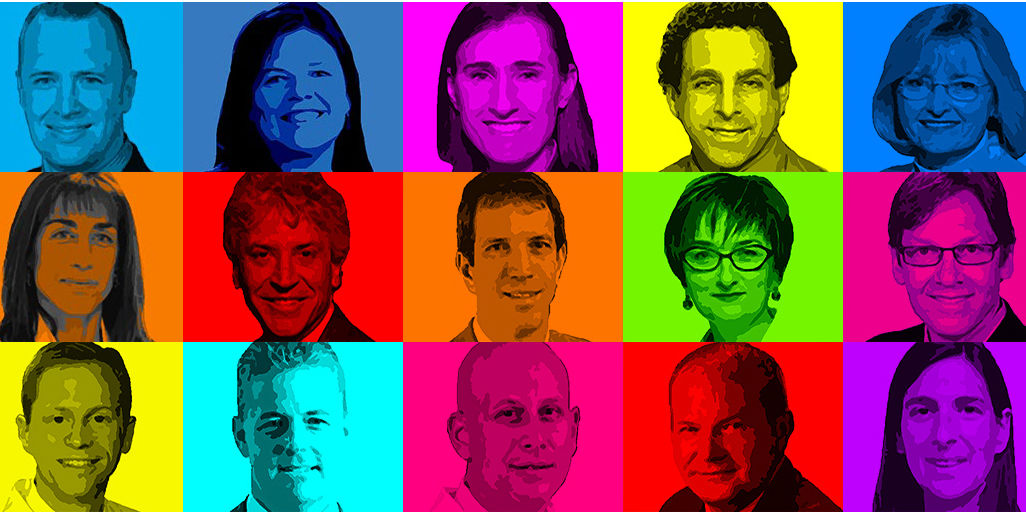hange management scholar John Kotter introduced the concept of a guiding coalition. The guiding coalition is more than a committee. It is a group with enough positional power to push through barriers and diverse enough perspectives to ensure informed and actionable decisions. The coalition needs the street cred to influence peers and the leadership experience to get things done. They combine front-line knowledge with expanded system perspective to meaningfully organize department efforts.
In order to succeed as a value-driven organization, we needed a new coalition—made up of providers focused on outcomes with a passion for improvement science. They would need to explain the measures and use data to drive improvements in their respective departments. This represented a new type of leadership. And it needed a new job description—the Chief Value Officer.
Background
In 2012, Bob Pendleton became the University of Utah’s first Chief Medical Quality Officer. Pendleton believed that above all else, the organization needed to believe that quality metrics mattered. Instead of looking at the external pressure negatively, he found that quality metrics resonated with his personal vision of medicine. “For me, tying it back to the patient makes it easier…We are always saying transformation in healthcare is SO HARD. We should be saying that it is SO EASY. There is not a better true north than making it possible for someone to live a better life with better health.”
“For me, tying it back to the patient makes it easier…We are always saying transformation in healthcare is SO HARD. We should be saying that it is SO EASY. There is not a better true north than making it possible for someone to live a better life with better health.”
In order to engage physicians, Pendleton knew he needed to piece together the context, the “why,” for change. Without that understanding, change would be impossible. Pendleton started sharing his vision with one on one meetings, but that soon mushroomed to division meetings, team meetings, department meetings, and grand rounds. He began to see what resonated and what didn’t. His message was essentially the same for every group: 1) We are moving from volume to value in healthcare, 2) value means making things better for every patient, and 3) here is what I need from you.
From "Turning Doctors into Leaders"
Thomas H. Lee, MD, Harvard Business Review (April 2010
Creating a Coalition
But this change could not succeed with only one leader. Pendleton staunchly believed that this work required a team of physician leaders. He had read a paper about physician quality officers who successfully led quality and safey improvement efforts throughout a large health care system. Pendleton and Chief Medical Officer Thomas Miller proposed building a group of physicians who could wade through these ever expanding measures of value.
As he presented, Pendleton searched for faculty who could become physician quality officers. He looked for physicians who were interested and approached improvement with an open mind. Pendleton found that the most receptive were like him, faculty growing in their early to mid-career and deep in the trenches of clinical and academic work. Pendleton and Miller created a new position, similar to a physician quality officer, called a Chief Value Officer.
Further Reading
Thomas H. Lee, “Turning Doctors into Leaders,” Harvard Business Review, April 2010
Stanley McChrystal, Team of Teams, 2015
The Chief Value Officer would be embedded in their respective School of Medicine department or service. They would lead efforts in the department in all areas of the improvement–quality, cost, and service. Pendleton would use the Chief Value Officers as an army to execute on the strategy of value improvement. He found 22 physicians from both inpatient and ambulatory areas to serve as Chief Value Officers in 2014. Margaret Pearce, former Chief Nursing Officer, added nursing Chief Value Officers in 2015. A year later, Pendleton comments, “These are highly motivated and talented people, and it has been fun to see them seize the work and run. Too often added responsibility can feel like a burden, but with this group it has been an opportunity. Now there is guiding coalition who understands the context, and helps to shape the future.”
Chrissy Daniels
Mari Ransco
Bob Pendleton
Crisis requires new ways of doing things, but those who know how to double down on existing strengths thrive in complexity. Case manager Todd Selmer shares two tactics for managing change brought on by the coronavirus that have always served him well.
In her five years at University of Utah Health as hospitalist, educator, and medical director of AIM-A and WP5, Karli Edholm led amazing amounts of impactful work. She trained future leaders and improved the safety, experience, and cost of an inpatient stay. Here she shares her lessons for leading and staying focused on improvement: start with your own frustration.
In the new series Book Club for Busy People, Accelerate shares highlights of books we’re hearing about from the community. First up: how thinking about others’ needs strengthens teams and increases civility in The Outward Mindset.
